The Ultimate Guide to Social Media Marketing: Tips, Strategies & Tools [2026]
Learn everything you need about Social Media Marketing - Pros & Cons, the Best Platforms to Use, Strategies, Tactics, Tools, Snapchat, TikTok, and Instagram.
Updated November 6, 2024
![The Ultimate Guide to Social Media Marketing: Tips, Strategies & Tools [{year}] main image](https://entail.mayple.com/en-assets/mayple/637235283d1059598965dfd0_socialmediamarketing1_a8f42d67f17ada7c19a1fdf4471a18d7_2000-1699775614609.jpg)
“The internet was made for social media” - Not a real quote, I just made it up 😆. But it does seem like it doesn’t it? Just need to slap Steve Jobs’s name on it to make it legit.
Social Media Marketing is as powerful way to connect with your ideal target audience and leverage your community of fans and followers for brand awareness, website traffic, and sales.
Social media is used by over 4.2 billion people worldwide and internet users spend an average of two hours and 27 minutes on it daily.
If your business is not active and present on social media you are missing out on this massive opportunity. As the world faces a recession this year, a lot of brands are throwing their money into Google Ads and Facebook Ads instead of doubling down on their organic social campaigns.
In this article, we will dive into the benefits of growing your social media presence, the best platforms you should use, and how to start a social media campaign from scratch.
So whether you’ve hired a digital marketing agency to run your social or you’re doing it on your own, this post is going to help you get the clarity you need to scale.
Let’s dive in.
What is social media marketing?
Social media marketing is the use of social media platforms and websites to promote a product or service. It provides a powerful way to connect with your target audience, build your brand, drive website traffic, and increase sales.
Social media marketing is:
- Part of your overall marketing ecosystem and aligns with your other marketing initiatives
- Data-driven and uses analytics in decision-making
- Proactive and brings you business leads, subscribers, and sales
- Usually involves collaborations with influencers and brand ambassadors
- Focuses on crafting and executing strategies
- Often includes a paid media element
Social media marketing has evolved over the last few years into a business-driving machine and if you pay attention to it, it can drive your business to the right cash destination.
So wait what’s social media management? And how are the two terms different?
Social media marketing vs management
Social media management is part of social media marketing, it’s necessary, but it’s not the whole picture. The two terms are used interchangeably but they are not the same thing.
Social media management focuses on:
- Updating and monitoring social media accounts
- Managing online communities
- Maintaining a social media presence
- Consistently posting content on social channels
The benefits of social media marketing
Social platforms can do so much for your business, whether you choose to focus on organic reach or add paid strategies into the mix.
Humanize your business
People like doing business with people. Consumers have more choices than ever today, and making your brand available, engaging, and friendly with a touch of personality will give it all the ammunition it needs to attract the right crowd.
That doesn’t mean you have to take professionalism out of the picture, but rather take away any corporate stiffness you had in your marketing plan and show off your personality through your content and interactions.
Tips to humanize your business include:
- Communicate and interact with your followers in a fun, casual, and friendly way
- Put faces to your brand’s name
- Share behind-the-scenes video and photo footage
- Talk like a person
- Participate in active conversation
Drive traffic
Your social media channels are vehicles for driving traffic to your converting assets. Whether that means your website, landing pages, subscription form, or booking page.
Tips to drive traffic with social channels include:
- Optimize your social profiles: have a clear message, keep branding on point, and tell social media users where you want them to go
- Post consistently: your audience can quickly forget you exist if you don't show up in their feeds
- Create engaging and entertaining posts that give value but leave your audience wanting more (get really good at content curation)
- Include very strong CTAs: tell your audience what to do. It’s as simple as that.
Your social media profiles are also landing pages that need to convert your audience. The key is understanding that the conversion goal is sending them to your money-making landing pages.
Build an online community
Social media really is really about… being social. And that means creating communities you can be social with.
Online communities are more than just customers. They are a group of raving fans ready to vouch for you, buy from you, and refer their family and friends. It’s your online support group of people who like you and it’s also a great way to get more paying customers.
Here’s an example from SproutSocial:
Best strategies for building a community
Get user-generated content
Encourage your customers to share photos and videos of your products and give their opinions and testimonials. Then, share their content on your social media profiles and make them part of your social media ecosystem.
Understand your target audience (duh)
But really – understanding your audience, their needs, their likes, their dislikes, what they care about, and how they communicate is what you need to do.
A brand that cares about the same thing they care about will get their attention a lot faster than a brand that just assumes. \Remember, today’s consumers shop for more than bargains. They want to support brands with a mission and values that match theirs.
Don’t forget the groups!
Targeted groups on platforms like Facebook and LinkedIn are great for engaging with audiences interested in specific causes or topics. You can join groups as a business or create your own.
Generate leads and sales
Social media lead generation is part of every B2B marketer’s strategy. When you want to move beyond awareness and branding, collecting leads is the move to go for.
On the B2C side, every platform has an advertising option. Put your offer in front of a targeted audience of users ready to buy and get them to your landing pages.
Platforms like Facebook, Instagram, and Pinterest have social shopping built-in so your customers can purchase from you without even leaving the platform.
Increase brand awareness
Another benefit of using social media is that consistently posting and engaging on social media platforms will increase your brand awareness. The more you post, the more you get seen. It’s as simple as that.
Of course, creating viral content takes a lot more effort than that, but you get the idea. Here’s a great brand awareness campaign example from Starbucks:
Tips to increase brand awareness:
- Create partnerships and collaborations: tap into other people’s audiences when you need a boost in reach.
- Encourage sharing, tagging, reposting of content – you can’t do it all yourself and you shouldn’t. Leverage your group of raving fans!
- Run contests and giveaways – your fans love this and it’s a great way to quickly build brand awareness.
Check out our list of eCommerce marketing tools to get more ideas for brand awareness campaigns.
Build relationships
Your social media platforms are great tools to build and nurture relationships with your current customers and audience. Consumers are more empowered than ever before and they want to hang out with you.
Tips for building relationships with your followers on social media:
- Engage in a human fashion – comment, reply to messages, and show your human side.
- Offer customer service on your social profiles – the last thing your customers want to hear when they reach out for help on social media is “call our customer service team”. Customer service and social media are very interconnected. Respond, be helpful, encourage customer feedback and don’t ignore complaints.
- Show customer appreciation: share their user-generated content, and host giveaways, coupons, and offers.
Those are some great benefits of using social channels, what are the drawbacks?
Disadvantages of social media marketing
Social media marketing is essential for your brand and business but your entire marketing strategy cannot rely just on social media. A healthy marketing structure is an entire ecosystem with connected marketing initiatives, including a variety of social media strategies.
Social media is a fantastic part of your successful marketing strategy but it needs to be aligned with your other marketing initiatives if you want it to work.
How to create a social media strategy
With social media marketing driving such an important role in today’s business let’s dive into how to create a social media marketing strategy:
Determine your goal
There are a lot of reasons why you should leverage social media marketing and they need to be clear to you and your team. While every business wants more sales, the road there needs to be mapped out clearly with an execution plan. Determine what role social media marketing will have in achieving your overall business goals and from there, create your content and growth strategy.
Pro tip: Read industry blogs and social media books to get ideas of what other brands in your niche are doing on social.
Select your platforms
You don’t have to be on all platforms, or at least, not to the same extent. Choose the platforms where your potential customers hang out most and be the most active there. Optimize your campaigns on those ideal platforms first and then move out from there.
Create your content strategy
Creating and publishing social media content takes time and resources. The last thing you want to do is show up on your social accounts every day trying to think of what to post. It’s not a story with a happy ending, been there, seen that.
Instead, create the bulk of your content for your pillar platforms and then repurpose it on your secondary platforms. Change up the content and format a bit to respect platform-specific publishing. You should put everything together into a social media marketing plan.
Pro tip: Want to keep all your ideas in one place? Get our social media startegy worksheet.
Be intentional about your growth and engagement
Your content is only valuable if it is seen and engaged with. A great social media marketing strategy starts with content but it is continued with growth and engagement so invest time in actively growing your accounts.
Test out different types of content (images, videos, carousels, long-form posts) and then see what gets the most engagement.
Track and measure
Social media relies on data-driven decisions just like any other marketing channel. Track and measure your activities using one of the myriads of social media apps out there and let data dictate your next move.
You can also use Google Analytics to view the traffic you get from each social media site and how it converts.
Things to remember when creating your social media strategy:
- Be pragmatic and read the numbers. It’s all about the audience, and not about you. Let the analytics tell you what works and what doesn’t, and make detached data-driven decisions.
- Stay relevant with : see what your audience talks about, and cares about, and be part of the conversation.
- Consistency is key. Building a strong social media strategy takes time.
Top social media marketing statistics
Why should you care about social media marketing? Because the data says so. Every year, big data companies release hundreds of data and information about social media usage. Here are a few that should grab your attention:
- In 2021, over 4.26 billion people used social media worldwide, a number projected to increase to almost six billion in 2027 (Statista)
- Worldwide, people spend an average of 2 hours and 27 minutes per day on social media (Hootsuite)
- 81% of people use Instagram to research products and services (Hootsuite)
- In 2021, one-third of Facebook’s users purchased a product on the platform, a number that’s expected to grow over the next few years (Insider Intelligence)
- 97% of top searches on Pinterest are unbranded (meaning users haven’t made up their minds yet) (Pinterest)
- TikTok has reached 1B users in 2021 (TikTok)
What all of this means:
- People continue spending time on social media and that trend is increasing.
- People intend to buy products and services on social media.
The top social media marketing platforms
Social media is all about meeting your target audience where they are, and they often are in many places at once. That also means you need to interact with them differently on each channel. Let’s dive into the most popular social media networks.
Facebook is still the most popular social media network and an invaluable tool for businesses worldwide. Having a presence on Facebook is critical – it gets your content in front of consumers.
Plus, businesses that don’t have an active social media presence are usually not viewed as trustworthy and Facebook is one of those platforms that consumers expect every brand to be on.
Facebook also allows you to target specific audiences and advertise to them in a relatively cost-effective way.
Audience: 1.9B daily users worldwide, Gen X and Millennials
Best for: Information, entertainment, brand awareness, ads
Tips to rock it with Facebook:
- Keep your business information accurate: Facebook often acts as THE social search engine. Put the right information in front of the right people.
- Make your business easy to contact: consumers love to interact with brands on Facebook, so make it easy to interact with your Facebook page.
- Focus on your testimonials: this is particularly important if you run social media advertising campaigns. Consumers rely on product reviews to make purchase decisions.
- Experiment with different content types: check out our guide on the best content for Facebook posts.
Instagram has come a long way from sharing photos with friends. One of the most complex social media platforms, it can do so much for your business.
It’s the most popular social media site for influencer collaborations and social shopping. It allows you to show products and glimpses behind the scenes with reels, and shop in the app. Studies show that 72% of users make buying decisions based on Instagram content.
Here’s an example of a great carousel post from Business Insider.
Audience: 2B active monthly users (Statista), primarily Millennials
Best for: advertising, UGC, product showcase
Best practices: share high-quality visual content and user-generated content, reels, and behind-the-scenes footage.
Some say that Twitter is making a comeback, and some say it never left. Twitter connects you to not only your audience but also to what is happening in the world every day. Trending topics and hot conversations take priority on this platform and you have the chance as a brand to stay relevant.
Twitter is also great for social listening. Consumers often turn to Twitter when they have a complaint to make. It’s great for your company’s reputation and PR.
Audience: 240M monthly active users worldwide, primarily millennials
Best for: community building, reputation management, customer service
Tips for Twitter: giving is as important as receiving. Where on Instagram and Facebook you can get away with scheduled posts and late replies, Twitter requires real-time engagement. Also, experiment with posting frequency, try posting 4-5 times per day and see how your engagement changes.
TikTok
TikTok has taken the world by storm in the last couple of years. The organic exposure is truly next-level. With TikTok, you can really maximize your creativity and create collaborations and partnerships. It’s the ideal platform for short videos.
Audience: 1B active monthly users
Best for: Brand awareness, community building, short videos, and trends.
Best practices: creativity and authenticity. Follow trends and work with content creators. Content takes a lot of time to create and trying to do it all on your own will affect your posting consistency.
Pinterest is one of the most underrated platforms and that’s because most businesses don’t understand how to use it properly. Pinterest is not just a social media platform, it’s a search engine. That means you need to apply the same practices you would apply to rank your blog content.
Understand that most searches are unbranded and people can find your content by just searching on Pinterest. A vetted Pinterest marketing expert can help you leverage keywords, optimize your pin descriptions, and post 10+ times per day.
Audience: 445 million active monthly users worldwide. Millennials, gen Z, Gen X, Baby Boomers.
Best for: Brand awareness, SEO, and reach
Remember: Pinterest is a traffic source so your goal should be to create compelling content and lead your ideal customers to your website. And keep SEO in mind! Want to multiply your organic reach? Check out our list of the top Pinterest growth agencies to work with.
YouTube
While TikTok and Instagram are more popular for short videos, YouTube is quickly catching up with YouTube shorts.
YouTube really gives you the stage to showcase what you know with longer videos. Users’ attention span is longer on YouTube and that works in your favor!
YouTube is also great for SEO. Because it is a Google product, ranking YouTube videos can often rank your brand on Google with less effort than articles. And your video content would then give a boost to your regular blog content.
Audience: 360M daily active users worldwide, primarily Millennials
Best for: Brand awareness, community building, SEO, sales
Best practices: use SEO practices with relevant keywords and good descriptions. Use a tool like VidIQ or TubeBuddy to determine how good your video SEO is and gain insights on competitors.
LinkedIn was built for professional relationships. If you have a very defined audience, you can leverage LinkedIn to connect with the right people.
And this social network is not only great for building your external community but also your internal community: it’s your company’s time to shine and attract the best candidates when you scale.
Audience: 774 million users worldwide. Millennials, Gen X, Baby Boomers.
Best for: B2B relationships and business development
Snapchat
Snapchat continues to be popular among young adults, in particular, Gen Z. While there are other video platforms currently making waves, Snapchat’s fast-disappearing content and filters make it fun and engaging.
You can also create your own filter to increase brand popularity. It’s great for sharing exclusive content. Brands can also use Snapchat Ads to reach a very targeted audience.
Audience + expectations: 363 million daily active users (Statista), mainly Gen Z
Best for/ leverage for: Brand awareness, advertising
Clubhouse
Clubhouse gained a lot of buzz with the invitation-only set-up when it launched. This audio platform is a go-to destination for users looking to spark and listen to interesting conversations.
Audience + expectations: 10 million weekly active users (Statista), mostly Millennials
Best for/ leverage for: Community building, advertising
Social Media metrics to measure
Now that you have an overview of all the various social media sites, let’s discuss the various metrics you have to pay attention to.
Engagement
Social media is not a one-way street anymore. While in the past brands used a “from me to you” communication approach, today it needs to be collaborative, and that’s measured by engagement.
Social media engagement is measured by likes, comments, saves, clicks, subscribers, shares, retweets, repins.
Why engagement is important:
- Represents how well your audience interacts with your content and social profiles
- Signals how relevant your audience finds your content
Strategies to increase social media engagement:
- Educate and entertain: provide quality content that resonates with your audience
- Include CTAs: your audience won’t know what action steps to take if you don’t tell them what you want from them. Have strong CTAs like: “save this for later”, “ tag someone in the comment”, “leave an emoji” to generate constant engagement
- Have a specific customer persona in mind when you create social media content
- Engage back with comments, likes, and replies to DMs
- Use interactive elements like Stories or Stitch
Pro tip: Want to create content that gets real engagement? Hire one of our top Instagram experts.
Reach
Your social media reach is an awareness metric and represents the number of unique users that see your content in your feed. In advertising campaigns it provides a rough sense of how much of your target market has seen your ad.
Why reach is important:
- Reflects your ability to show your social content to a new audience that hasn’t interacted with you yet
- Tells you how relevant your content is: platforms push content that people engage with
Strategies to increase your social media reach:
- Use hashtags strategically with a tool like Flick to help you find, optimize, and measure the performance of your hashtags
- Get your audience involved: ask them to tag and share your social media posts
- Use the latest features on each social network. Platforms will prioritize users that use their latest releases. Add stickers on Instagram or trending sounds on TikTok as a starting point.
- Post consistently - business profiles get less reach so it’s important to not give up and stay consistent.
- Increase your engagement: if your audience engages with you, the platforms will see the signals and push your content to the top
- Tag partners: your post will be visible in their tagged content and they will reshare and engage with you
- Create mobile campaigns - post content that’s built for mobile devices
Followers
There is no social media manager that hasn’t been asked at least once to increase followers. Even though it’s considered a vanity metric, followers do actually positively impact your traction on social. Though it’s not the most important metric, marketers should still
Why followers are important in your social media strategy:
- Increases brand awareness and creates a social asset: the more people listening to you the more people you can present your offer to
- Creates a community
- Creates influence and authority in your industry
- Followers can quickly turn into customers
- Your content is only as good as long as it’s seen and your followers are the first to see it
Strategies to increase your social media followers:
- Run contests or giveaways
- Shoutout for shoutout: promote accounts with a similar target market that don’t directly compete with your business by resharing their content and giving them a shout-out
- Optimize your hashtags
- Leverage your other marketing channels like your email list
- Package inserts: offer a discount for following
- Ask your audience to upload photos and videos of your products
- Influencer collaborations
- Spend money on ads
Note: The quality of your following matters more than its size. Don’t ever buy followers. Social media networks will penalize you and users will see right through that. Want to check how many fake followers an account has? Use one of these influencer marketing tools.
Impressions
Impressions refers to the number of times your content was seen on a social network. This metric tells you that content was delivered to someone’s feed and it’s especially important in paid campaigns.
Your audience won’t buy from seeing your content just once so you want to expose them to your content multiple times
How to improve your social media impressions:
Here you need a fine line between too little and too much. If your impressions are low, your audience doesn’t have time to get to know your brand. If your impressions are too high you risk ad fatigue.
The optimal amount depends on your social media goals and usual metrics. If you have a hot sale going on you want to fire all pistons. If you’re just starting and testing the waters you want to take it slowly.
To increase impressions, you can implement the same strategies as you would for increasing your reach.
Video views
Video is the hottest social media content format and you want this stat to rock.
Why video views are important in your social media strategy:
- Tells you that people are engaging with your content
- Increases the chances of attracting new followers
- Increases overall engagement
How to increase video views in your social media:
- Use high-quality and engaging cover photos
- Give context with headings and banners that stand out
- Always have captions/subtitles as most people watch videos with their sound off
- Start your post with strong hook
- Show your face and avoid stock footage
- Get to the point early on in the video
- Stay on point
- Pack your video with information
- Make your videos high quality (phone camera is ok)
- Use subtitles (for the user that will watch your video with no sound on their mobile device)
Clicks
This is the metric that tells you how engaging your content really is.
Why clicks are important in your social media strategy:
- Every click takes your audience closer to a purchase
- Takes your audience to a converting destination
Strategies to increase clicks:
- Include CTAs in your social media posts
- Give your audience a reason to click
- Use images
- Make it easy for them to click.
Profile visits
Why profile visits are important:
- They tell you that your audience wants to see more information about you
- Can turn cold viewers into followers and fans
How to increase profile visits:
- Create relevant and high-quality content. This sounds obvious but your content needs to resonate with your audience.
- Optimize your profile so you can be found
- Include CTAs – tell people to go to your profile
- Engage – and get your name seen
- Make reels and pop up in trending feeds
- Collaborate with accounts that have a similar audience
Reposts
Why it’s important:
- Tells you that your content is worthy of being seen
- Increases traffic, impressions, reach, engagement
- Your content is visible on other accounts
How to increase:
- CTAs: tell your audience to repost
- Tag partners and collaborators
- Run contests and giveaways
Shares
Why it’s important:
- Signals which content engage your audience most
- Helps you build links and footprint organically
- Increases traffic, tap into new audiences
How to increase:
- Use CTAs: tell your audience to share your content
- Pack a value punch with educational and entertaining content
Make social media work for your business
Effective social media marketing involves a lot of moving parts, but when they all come together it produces a growing asset for your business that can be leveraged over and over again.
In today’s world, consumers expect to be able to connect with brands they are interested in before making a purchase, and they expect those brands to be continually present on the social networks that they use. This is why social media marketing automation is a crucial part of any digital marketing strategy.
Want help with your social strategy? Looking for that ideal platform and haven’t found it yet? Come work with one of our expert social media agencies.
FAQs
How do I start social media marketing?
- Determine your social media goals - What do you want to get out of each social platform? Are you after Reach? Traffic? More leads? Engagement? Look at your Google Analytics and see your current metrics.
- Evaluate your resources - How much money do you have to spend per channel? This will determine whether you should do organic or launch paid marketing campaigns.
- Create a plan - Decide on the type of content you want to publish, how often, and on which platform. All of this should go into your social media marketing plan.
- Get the right tools - Get the right social media apps and tools to help you create better content, schedule it, and automate engagement.
- Create a schedule - Create a schedule of when you will post content to maintain consistency.
- Create and publish your content - Create educational content for your current customers and promotional content for leads and potential buyers.
- Focus on the 80-20 rule - Focus on the posts that do well and try to re-create that engagement with new posts.
- Analyze and optimize - Decide on a few social media metrics you’d like to track and optimize your campaigns accordingly.
What is social media marketing examples?
An example of social media marketing (SMM) is a boutique clothing store running Instagram ads showcasing new arrivals and offering exclusive discounts to followers.
What are the four types of social media marketing?
There are different types of social media marketing, including:
- Content marketing
- Advertising
- Influencer marketing
- Community engagement
What are examples of social media marketing strategies?
Examples of social media marketing strategies include:
- Using humor
- Using influencers
- Displaying user-generated content
- Launching contests or giveaways
- Posting interviews and videos
What are the advantages and disadvantages of social media marketing?
Advantages include:
- Really easy to start
- Very low to no cost (compared to other digital marketing strategies)
- Can be an effective strategy to grow brand awareness and build an engaged customer base
- There are a ton of free or cheap social media management tools available
- Effective for social selling
- Great for getting customer feedback
Disadvantages include:
- Slow to achieve ROI
- Very time consuming
- Easy to start - difficult to master
What are the benefits of social media marketing?
The benefits of social media marketing are:
- Increases trustworthiness and brand recognition
- Increases levels of customer service and satisfaction
- Helps build an online community
- Helps business owners tell authentic stories and create engaging content.
What are the 3 main components of social marketing?
The main components of social marketing are:
- Messages that potential customers find relevant and timely
- Effective tools to share those messages and measure the engagement
- Methods that easily and profitably convert prospects into customers

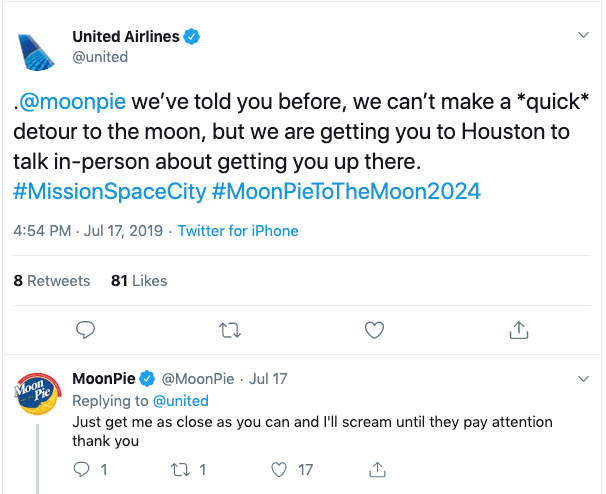
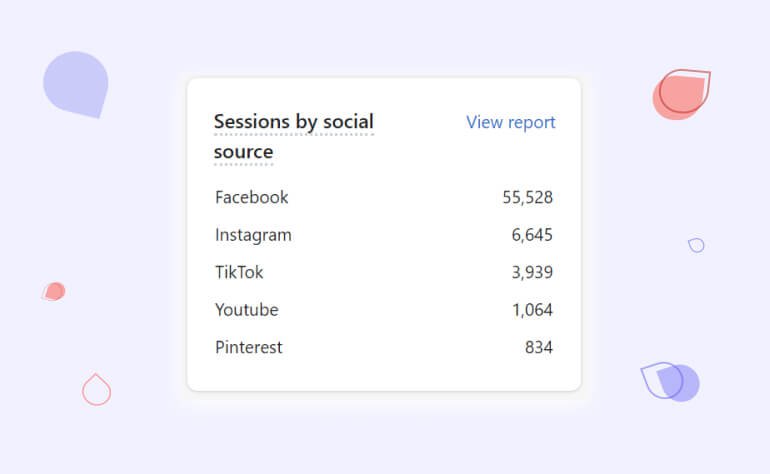
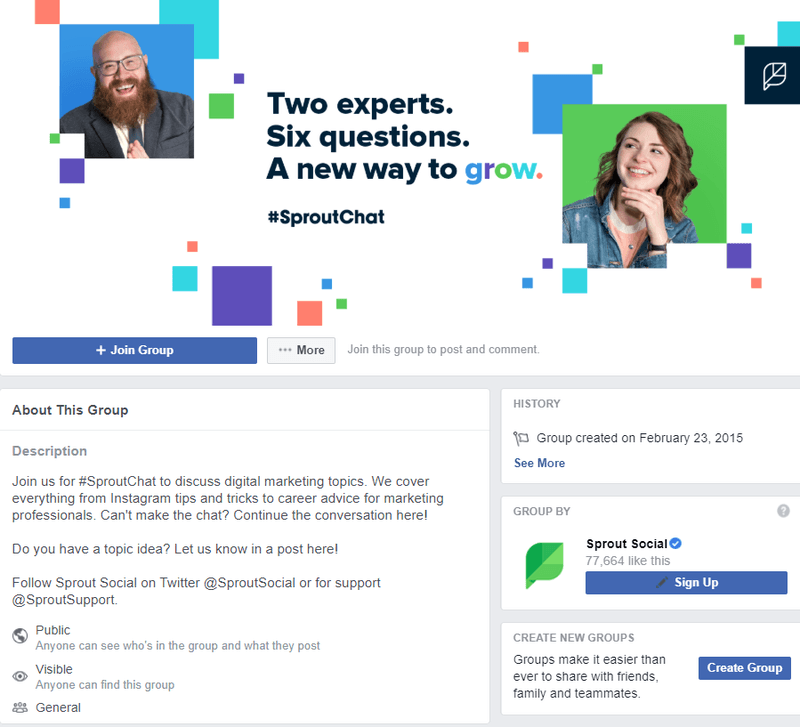
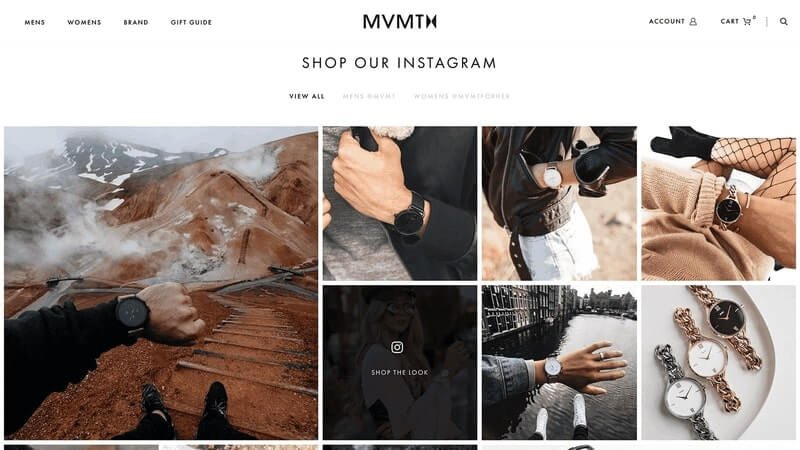
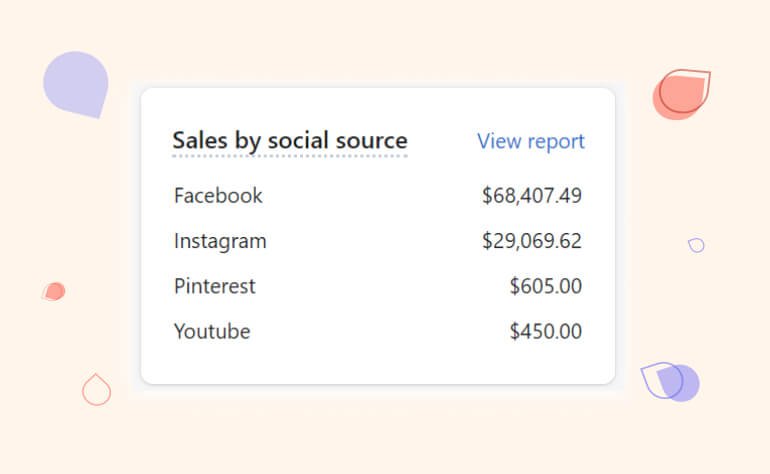

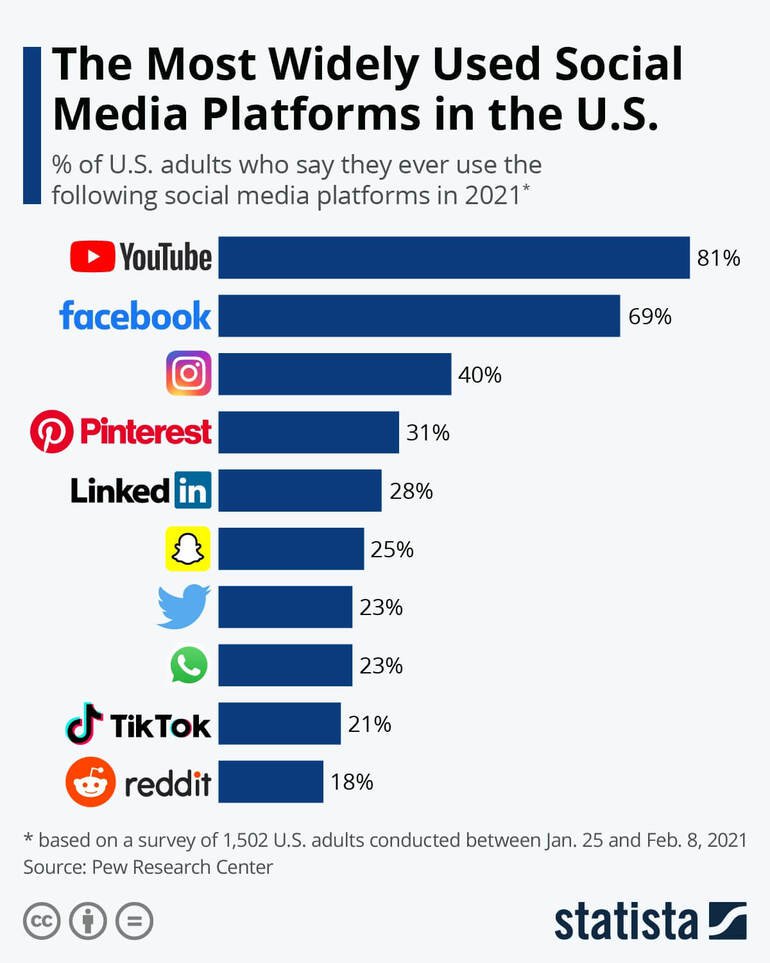

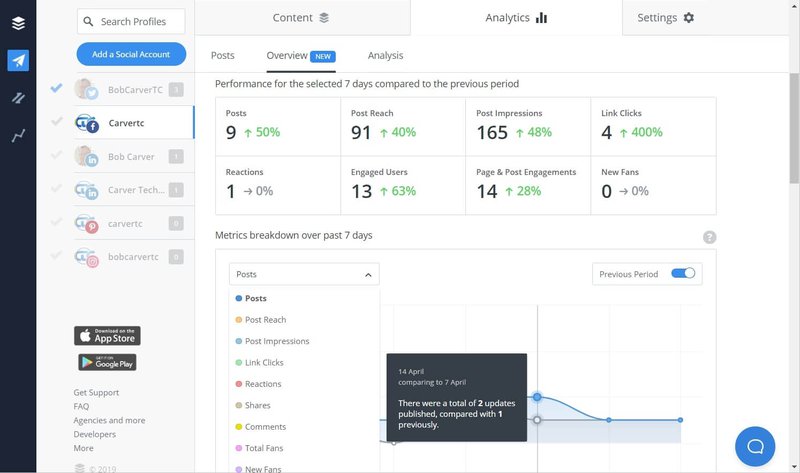
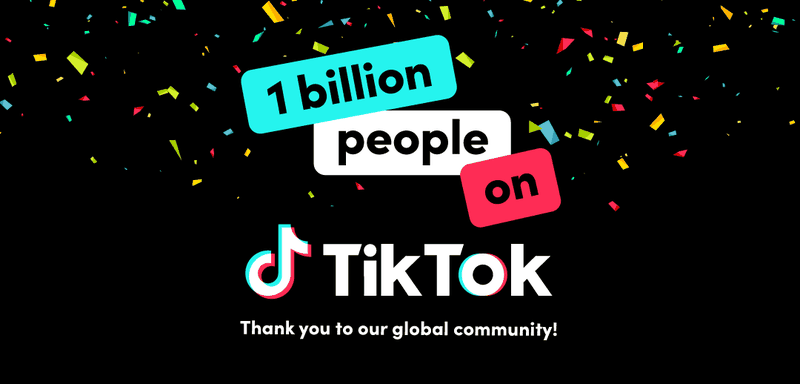

![Social Media Metrics: The Ultimate Guide for 2024 [Updated]](https://entail.mayple.com/en-assets/mayple/fit-in/280x280/2021200x675MaypleBH200111-1706188601822.jpg)



